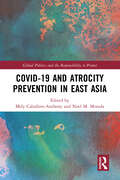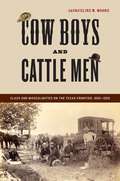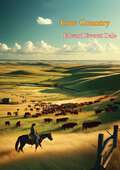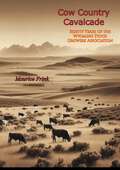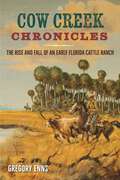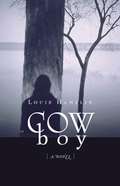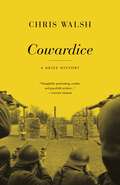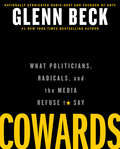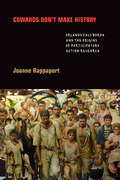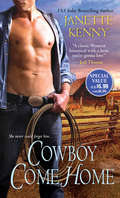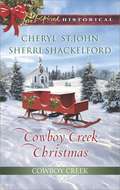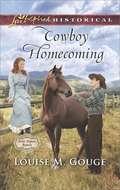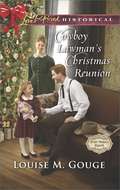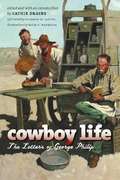- Table View
- List View
Covid-19 and Atrocity Prevention in East Asia (Global Politics and the Responsibility to Protect)
by Mely Caballero-Anthony Noel M. MoradaThis edited volume examines the multifaceted impact of the COVID-19 pandemic on peoples and states in East Asia. The book brings together selected case studies in Southeast Asia and the wider East Asian region that analyse how states in the region have responded to the pandemic and its multi-dimensional threats to human security, including risks of atrocity crimes. In the context of protecting human security and upholding the Responsibility to Protect (R2P), the work analyses how such a consequential crisis has compounded socio-economic and political problems, exacerbated societal fault lines, and created new types of risks for people’s safety and security. Using the United Nations Framework of Analysis for Atrocity Crimes: A Tool for Prevention, the book presents seven case studies that identify relevant risks factors confronting selected countries and the extent to which the global pandemic has magnified and/or exacerbated such risks for affected populations. It draws key lessons on how states should manage extant and emerging risks for atrocity crimes and how they can build and enhance their capabilities for preventing atrocities in both conflict-affected and relatively stable states, particularly within the context of Pillar 1 (prevention) and Pillar 2 (capacity building) of the R2P principle. This book will be of much interest to students of the Responsibility to Protect, humanitarian protection, Asian politics, International Relations, and Security studies.
Covid-19 in Africa: Governance and Containment (African Histories and Modernities)
by Taibat Lawanson Susan Arndt Yacouba Banhoro Enocent Msindo Peter T. SimateiWritten amidst the ongoing Covid-19 pandemic, this edited volume draws on the expertise of social scientists and humanities scholars to understand the several ramifications of Covid-19 in societies, politics, and the economies of Africa. The contributors examine measures, communicative practices, and experiences that have guided the (inter)action of governments, societies and citizens in this unpredictable moment. Covid-19 tested governments’ disaster preparedness as well as exposed governments’ attitudes towards the poor and vulnerable. In the same vein, it also tested the agency of the generality of the African populace in the face of containment measures and how these impacted on everyday social, cultural and economic practices of the ordinary peoples. In this vein, our concern is to understand the relationship between growing vulnerability on the one hand and ingenuity of agency on the other, and how both were embodied, narrated and discoursed by the African poor, university students, religious entities, and middle-classes, and those that bore the major brunt of the lockdowns.Lastly, the Covid-19 pandemic impacted regional trade and other bilateral relations in Africa, creating possibilities for regional entities such as ECOWAS and EAC to demonstrate their creativity (or a lack of it) in dealing with the pandemic. The contributors thus examine the regional dimension of the crisis and particularly evaluate how covid-19 tested the resilience of multilateralism, regional trade networks, cross border informal economies, and human movements.The volume is thus a useful resource for scholars of Africa, policy makers and those who want to understand Covid-19 in Africa. It provides a multiplicity of perspectives of the pandemic and African responses at different levels of society, economy and the political spectrum. The continental focus of this volume gives room for broader comparative analyses. Lastly, this interdisciplinary work benefits from the input of medical historians, anthropologists, sociologists, linguists, political scientists, literature scholars, urban planners, geographers and others.
Covid-19 in Africa: Societal and Economic Implications (African Histories and Modernities)
by Taibat Lawanson Peter Simatei Susan Arndt Enocent Msindo Banhoro YacoubaWritten amidst the ongoing Covid-19 pandemic, this edited volume draws on the expertise of social scientists and humanities scholars to understand the many ramifications of Covid-19 on societies, politics, and the economies of Africa. The contributors examine measures, communicative practices, and experiences that have guided the (inter)action of governments, societies, and citizens in this unpredictable moment. Covid-19 tested governments’ disaster preparedness as well as exposed governments’ attitudes towards the poor and vulnerable. In the same vein, it also tested the agency of the African populace in the face of containment measures and their impact on everyday social, cultural, and economic practices of ordinary people. In this vein, our concern is to understand the relationship between growing vulnerability on the one hand, and ingenuity of agency on the other, and how both were embodied, narrated and discoursed by the African poor, university students, religious entities, middle-classes, and those who bore the major brunt of the lockdowns.The volume is thus a useful resource for scholars of Africa, policy makers and those who want to understand Covid-19 in Africa. It provides a multiplicity of perspectives of the pandemic and African responses at different levels of society, economy and the political spectrum. The continental focus of this volume gives room for broader comparative analyses. Lastly, this interdisciplinary work benefits from the input of medical historians, anthropologists, sociologists, linguists, political scientists, literature scholars, urban planners, geographers and others.
Cow Boys and Cattle Men: Class and Masculinities on the Texas Frontier, 1865-1900
by Jacqueline M. MooreCowboys are an American legend, but despite ubiquity in history and popular culture, misperceptions abound. Technically, a cowboy worked with cattle, as a ranch hand, while his boss, the cattleman, owned the ranch. Jacqueline M. Moore casts aside romantic and one-dimensional images of cowboys by analyzing the class, gender, and labor histories of ranching in Texas during the second half of the nineteenth century.As working-class men, cowboys showed their masculinity through their skills at work as well as public displays in town. But what cowboys thought was manly behavior did not always match those ideas of the business-minded cattlemen, who largely absorbed middle-class masculine ideals of restraint. Real men, by these standards, had self-mastery over their impulses and didn’t fight, drink, gamble or consort with "unsavory" women. Moore explores how, in contrast to the mythic image, from the late 1870s on, as the Texas frontier became more settled and the open range disappeared, the real cowboys faced increasing demands from the people around them to rein in the very traits that Americans considered the most masculine.Published in Cooperation with the William P. Clements Center for Southwest Studies, Southern Methodist University.
Cow Country
by Edward Everett DaleStep into the rugged and romantic world of the American West with Edward Everett Dale's Cow Country. This evocative work paints a vivid portrait of life on the vast cattle ranges, capturing the essence of the cowboy era that defined a significant chapter of American history.Dale, a distinguished historian and storyteller, offers readers an immersive experience into the daily lives, struggles, and triumphs of cowboys and ranchers who tamed the wild landscapes of the West. With meticulous attention to detail, he chronicles the evolution of the cattle industry, from its humble beginnings to its rise as a cornerstone of the American economy.Cow Country is rich with authentic anecdotes, historical accounts, and personal reflections that bring to life the colorful characters who inhabited this world. Dale's engaging narrative delves into the routines of cattle drives, the challenges of frontier life, and the unyielding spirit of the men and women who carved out a living in a harsh and unforgiving environment.Beyond the romanticized image of the cowboy, Cow Country explores the economic and social dynamics that shaped the cattle industry. Dale provides a comprehensive look at the impact of technological advancements, market changes, and government policies on the lives of those in the cow country.This book is not just a historical account; it is a celebration of a way of life that has become an iconic part of American heritage. Whether you're a history enthusiast, a lover of Western lore, or simply intrigued by the cowboy mythos, Cow Country offers a captivating journey into the heart of the American frontier.Edward Everett Dale's Cow Country is an essential read for anyone seeking to understand the true spirit of the American West and the enduring legacy of the cowboys who helped shape it. Join Dale on this remarkable adventure and experience the grit, glory, and grandeur of the cow country.
Cow Country Cavalcade: Eighty Years of the Wyoming Stock Growers Association
by Maurice Frink"Cow Country Cavalcade" by Maurice Frink is an insightful and comprehensive chronicle of the Wyoming Stock Growers Association (WSGA), detailing its profound impact on the cattle industry and the development of the American West over eight decades. First published in 1954, this historical account delves into the founding, evolution, and achievements of one of the most significant agricultural organizations in the United States.Maurice Frink, an accomplished historian with a keen interest in Western history, provides a meticulously researched narrative that captures the spirit and challenges of the cattle industry from the late 19th century through the mid-20th century. The book begins with the establishment of the WSGA in 1872, a response to the burgeoning cattle trade and the need for a unified voice to address the concerns of stock growers in Wyoming.The narrative is enriched by a wealth of historical anecdotes and firsthand accounts that provide a deeper understanding of the daily lives of cattlemen and the operational challenges they faced. Frink explores topics such as cattle drives, roundups, rustling, range wars, and the implementation of grazing regulations, offering a comprehensive look at the complexities of cattle ranching. He covers the significant events, influential personalities, and key decisions that guided the WSGA through periods of growth, economic downturns, and social change."Cow Country Cavalcade: Eighty Years of the Wyoming Stock Growers Association" is an essential read for anyone interested in the history of the American West, the cattle industry, or agricultural organizations. Maurice Frink's thorough research and engaging writing style make this book a captivating and informative tribute to the resilience and innovation of Wyoming's cattlemen and the enduring legacy of the WSGA.
Cow Creek Chronicles: The Rise and Fall of an Early Florida Cattle Ranch
by Gregory EnnsA boom-to-bust generational saga of a pioneer family and their cattle empire Cattle ranching has long been a major force in Florida, covering over 12 percent of the state’s lands. In Cow Creek Chronicles, journalist Gregory Enns explores this history through the century-long saga of the Raulerson family, who built a cattle empire at Cow Creek Ranch between Fort Pierce and Okeechobee.The Raulersons were a family of pioneers that moved south to Florida during the nineteenth century. Family patriarch Frank Raulerson established the ranch in 1923. As the cattle herd grew and fences were built, Seminole communities that had lived near the creek in thatched huts called chickees were forced off the land to nearby towns and reservations, and this book includes their stories. At its height in the 1960s, the 23,000-acre Cow Creek Ranch, operated by Frank’s granddaughter and heir Jo Ann Raulerson Sloan, boomed under the supervision of a core group of cowboys using modern agricultural methods. As the years went by, Jo Ann’s husband, TL Sloan, mismanaged expenses and mired the ranch in debt, and the family sold off the land in parcels—many of which are now conservation areas.In this narrative, readers will gain insight into how ranches were first established in Florida, including how cattle were managed and breeds developed. Enns opens a window into the lives of ranch hands and cowboys, highlighting traditions such as roundups, cattle drives, parades, and rodeos, as well as folkways such as cooking and handcrafts. He also draws attention to the history of the Cow Creek band of Florida Seminoles, including their legendary heroine Emateloye Estenletkvte (Polly Parker). Cow Creek Chronicles weaves together many strands in a unique history of the modern settlement of Florida.
Cow Woman of Akutan: An Extraordinary, Compelling Story of a Unique Alaska Adventure
by Joan DoddAs I made my way to the hold, I saw Charlie and Hans lashing the deck cargo down tighter while they, too, struggled against the violent rising and plunging of the boat. Suddenly, despite their efforts, some of the bales of hay and bags of feed slid over the side into the dark churning waters of the Pacific. Crashing waves and roaring wind were so loud I didn't hear them hit the black undulating water; they were just swallowed up. On reaching the hold, I heard cows above the din of the raging storm as they were bellowing in their fear and misery. Cow Woman of Akutan is an incredible account of a family and their partner as they encountered multiple disasters in their attempt to raise livestock on an isolated Aleutian island inhabited by a small group of Alaska Aleuts. Cow Woman of Akutan is a story of survival coupled with multiple events as Akutan villagers often come to the rancher's aid.
Cow boy: A Novel
by Louis Hamelin Jean Paul MurraySet against a backdrop of grey spruce and muskeg, Cowboy tells the story of Gilles Desches, a twenty-something who moves from Montreal to Grande-Ourse, a northern Quebec town haunted by the grisly memory of a twelve-year-old murder. Located at the back of beyond, Grande-Ourse is a dismal place with a bleak future. Until, that is, a Quebec consortium buys up the town, wanting to turn it into a hunting and fishing paradise for wealthy Americans seeking city comforts in the middle of nature. Working as a clerk for the Outfitters’ general store, Gilles is confronted by a harsh reality in which Whites are pitted against Natives. He tries to understand, tries to fit in, but only manages to be caught in the middle of two colliding worlds, discovering a colourful cast of characters in the process.
Coward at the Bridge
by James DelingpoleTrapped in a cupboard with a nubile blonde nymphomaniac; crossing the Waal under a hail of fire with the US paratroops of 82nd airborne; rattling in a jeep through the Dutch countryside with the men of 1st Airborne Recce Squadron; trying to take out a self-propelled gun with a ruddy useless PIAT. It's all in a day's work for Lt Dick Coward and Sgt Tom Price on their second published adventure. After the horrors of D-Day, they find themselves plunged into even greater chaos and mayhem as they land in the deceptively tranquil countryside around Arnhem, Holland, as part of Operation Market Garden. What should be a pushover - the ingenious scheme that everyone thinks will end the war by Christmas - turns into Britain's biggest military disaster of the Second World War. But if it's a cock-up, by golly is it a glorious one. Rarely if ever have Allied soldiers acquitted themselves better than the British, Americans and Poles, as they fought against the might of the SS, in their bid to capture 'The Bridge Too Far. " As usual Coward and Price are in the thick of it. They have to be. If Coward doesn't get a VC this time, he'll be booted off the family estate for good, and stand no chance of winning the heart of the fickle, dangerously beguiling Gina. Will he get the medal? Will he get the girl? Will Price be driven so mad by his master's Bertie Wooster-like stupidity that he ends up throttling him first?
Coward the Dramatist: Morals and Manners (Bernard Shaw and His Contemporaries)
by Roger KojeckyDiscussions of Coward’s achievement in the theatre between 1920 and 1966 have tended to stay with the colourful biography. The more analytical literary approach adopted here places Coward’s success in its wider theatrical context, making the connections with the work of other dramatists. He developed his technique according to what worked with theatre audiences. Taking up the well-made play, he brought in a more colloquial dialogue, explored, for instance, the morality and psychology of marriage and free love, and frequently exploited the dramatic possibilities of characters grouped into two camps. The book considers both the ‘pleasant’ and ‘unpleasant’ plays (to use the Shavian terms), and the episodic patriotic plays. It Includes Coward’s ambivalent approach to the ‘theatre of war’ in the 20th century. (123)
Cowardice: A Brief History
by Chris WalshA provocative look at how cowardice has been understood from ancient times to the presentCoward. It's a grave insult, likely to provoke anger, shame, even violence. But what exactly is cowardice? When terrorists are called cowards, does it mean the same as when the term is applied to soldiers? And what, if anything, does cowardice have to do with the rest of us? Bringing together sources from court-martial cases to literary and film classics such as Dante's Inferno, The Red Badge of Courage, and The Thin Red Line, Cowardice recounts the great harm that both cowards and the fear of seeming cowardly have done, and traces the idea of cowardice’s power to its evolutionary roots. But Chris Walsh also shows that this power has faded, most dramatically on the battlefield. Misconduct that earlier might have been punished as cowardice has more recently often been treated medically, as an adverse reaction to trauma, and Walsh explores a parallel therapeutic shift that reaches beyond war, into the realms of politics, crime, philosophy, religion, and love.Yet, as Walsh indicates, the therapeutic has not altogether triumphed—contempt for cowardice endures, and he argues that such contempt can be a good thing. Courage attracts much more of our attention, but rigorously understanding cowardice may be more morally useful, for it requires us to think critically about our duties and our fears, and it helps us to act ethically when fear and duty conflict.Richly illustrated and filled with fascinating stories and insights, Cowardice is the first sustained analysis of a neglected but profound and pervasive feature of human experience.
Cowards
by Glenn BeckCOURAGE > COWARDS As we approach the most important presidential election in America's history, something has been lost among all of the debates, attack ads, and super- PACs--something that Americans used to hold in very high regard: THE TRUTH. Glenn Beck likes to say that "the truth has no agenda"--but there's another side to that: people who have agendas rarely care about the truth. And, these days, it seems like everyone has an agenda. The media leads with stories that rate over those that matter. Politicians put lobbyists and electability over honesty. Radicals alter history in order to change the future. In Cowards, Glenn Beck exposes the truth about thirteen important issues that have been hijacked by deceit. Whether out of spite, greed, or fear, these are the things that no one seems to be willing to have an honest conversation about. For example: * How our two-party POLITICAL SYSTEM often leaves voters with NO GOOD OPTIONS. * How extremists are slowly integrating ISLAMIC LAW into our SOCIETY. * How PROGRESSIVE "religious" leaders like JIM WALLIS are politicizing the Bible. * How the CARTEL VIOLENCE on our border is FAR WORSE than people realize. * How "LIBERTARIAN" has been INTENTIONALLY turned into a DIRTY WORD. * How GEORGE SOROS has amassed enough MONEY and POWER to INFLUENCE entire ECONOMIES. In some cases, the truth is out there, but people simply don't want to hear it. It's much easier, and certainly a lot more convenient, to keep our blinders on. After all, as a quote attributed to President James Garfield made clear, "The truth will set you free, but first it will make you miserable." Miserable or not, the truth can no longer be something we hope for; it must be something we live. When courage prevails, cowards do not--and this book was written to ensure that's exactly what happens.
Cowards Don't Make History: Orlando Fals Borda and the Origins of Participatory Action Research
by Joanne RappaportIn the early 1970s, a group of Colombian intellectuals led by the pioneering sociologist Orlando Fals Borda created a research-activist collective called La Rosca de Investigación y Acción Social (Circle of Research and Social Action). Combining sociological and historical research with a firm commitment to grassroots social movements, Fals Borda and his colleagues collaborated with indigenous and peasant organizations throughout Colombia. In Cowards Don't Make History Joanne Rappaport examines the development of participatory action research on the Caribbean coast, highlighting Fals Borda's rejection of traditional positivist research frameworks in favor of sharing his own authority as a researcher with peasant activists. Fals Borda and his colleagues inserted themselves as researcher-activists into the activities of the National Association of Peasant Users, coordinated research priorities with its leaders, studied the history of peasant struggles, and, in collaboration with peasant researchers, prepared accessible materials for an organizational readership, thereby transforming research into a political organizing tool. Rappaport shows how the fundamental concepts of participatory action research as they were framed by Fals Borda continue to be relevant to engaged social scientists and other researchers in Latin America and beyond.
Cowboy (This Is What I Want To Be Ser.this Is What I Want To Be)
by Heather MillerAn introduction to the equipment, clothing, daily activities, and other aspects of the job of a cowboy.
Cowboy Charm School (The Haywire Brides #1)
by Margaret Brownley"A great story by a wonderful author." —DEBBIE MACOMBER, #1 New York Times Bestselling Author, for Left at the AltarWhen Texas Ranger Brett Tucker accidentally derails a wedding, he's determined to bring the estranged couple back together... but he never dreamed he'd start falling for the bride! Texas Ranger Brett Tucker hates to break up a wedding, but the groom—notorious criminal Frank Foster—is a danger to any woman. So he busts into the church, guns blazing...only to find he has the wrong man. STOP THAT WEDDING! Bride-to-be Kate Denver is appalled by her fiancé's over-the-top reaction to the innocent mistake and calls off the wedding—for good. Guilt-ridden, Brett's desperate to get them back on track. But the more time he spends with Kate, the harder he falls...and the more he yearns to prove that he's her true match in every way.What People Are Saying About Margaret Brownley: "Delightful, humorous...packed with engaging characters, loads of action, several mysteries— all enough sizzle to satisfy her fans." —RT Book Reviews for A Match Made in Texas "A sweet, touching love story." —Kirkus Reviews for Left at the Altar"Lively and warm. A welcome addition to a sparse yet popular subgenre." —Booklist for Left at the Altar
Cowboy Christmas
by Carol Finch Elizabeth Lane Pam CrooksTwelve days of Christmas--three heartwarming romances! A Husband for Christmas by Carol Finch To reassure her overprotective parents, Victoria Thurston must convince the town marshal to be her "holiday husband. " But the magical, festive air--and Tori's luminous green eyes--make it very difficult for Logan Daniels to keep to their marriage in name only! The Homecoming by Elizabeth Lane Brooding rancher Clay McAllister paid his reckless brother's dues in a tough Kansas jail. Now Clay must win back his beautiful wife, Elise. And, after three years apart, some yuletide passion is just what Clay and Elise need to reignite the fire that still smolders between them. . . . The Cattleman's Christmas Bride by Pam Crooks With her reputation cruelly slandered, Allethaire Gibson is forced to flee to the snowy Montana mountains. There the dazzling socialite unexpectedly finds a Christmas romance with a man who has fought for respect just as she has--rugged cattleman Mikolas Vasco!
Cowboy Christmas Rescue
by Colleen Thompson Beth CornelisonGunfire disrupts a Christmas wedding in this 2-in-1 collection of original, connected novellas. Rescuing the Witness by Beth Cornelison Bullets are fired at a ranch wedding in Texas and the only witness to the unknown sniper's identity is wedding guest Kara Pearson. When the rifle turns to her, Kara runs for her life. Her only hope for survival? The man who broke her heart years ago. But Sheriff Brady McCall vows to protect Kara-and right old wrongs. Rescuing the Bride by Colleen Thompson After being jilted and having gunfire erupt at his wedding, bull rider turned rancher Nate Wheeler fears his pregnant bride is the intended target. But as he and April Redding try to track down the shooter, Nate uncovers the secret reason April refused to say "I do" at their ceremony.
Cowboy Come Home (The Lost Sons Trilogy #3)
by Janette Kenny"A classic Western historical with a hero you're gonna love." --Jodi Thomas"An enjoyable, adventurous western." –RT Book ReviewsBelieve In Second Chances…Trey March never wanted to see Daisy Barton again. But there she is, in over her pretty little head running the JDB Ranch--and standing between him and the small fortune he's owed. Now if he wants to get his due, he'll have to save the ranch first…working side-by-side with the only woman he's ever loved. Without her overprotective father to guide her, Daisy's trying to stand on her own at last. But a sinister foreman with a grudge seems determined to cut her down at every turn. And Trey, the one man she can count on, is the same man she could never trust herself to resist…not even now, when her heart--and her life--are at stake. Praise for the novels of Janette Kenny"A classic western…Kenny delivers." --RT Book Reviews on In a Cowboy's Arms"With a cowboy like this, you can't lose!" --Linda Lael Miller on One Real Cowboy
Cowboy Conservatism: Texas and the Rise of the Modern Right (New Directions In Southern History Ser.)
by Sean P. Cunningham“Cunningham provides a vivid, informative, and frequently insightful chronicle of Texas politics between 1963 and 1980.” —Journal of American HistoryDuring the 1960s and 1970s, Texas was transformed by a series of political transitions. After more than a century of Democratic politics, the state became a Republican stronghold virtually overnight, and by 1980, it was known as “Reagan Country.” Ultimately, Republicans dominated the Texas political landscape, holding all twenty-seven of its elected offices and carrying former governor George W. Bush to his second term as president with more than 61 percent of the Texas vote.In Cowboy Conservatism, Sean P. Cunningham examines the remarkable origins of Republican Texas. Utilizing extensive research drawn from the archives of four presidential libraries, gubernatorial papers, local campaign offices, and oral histories, Cunningham presents a compelling narrative of modern conservatism as it evolved in one of the nation’s largest and most politically important states.Cunningham analyzes the political changes that took place in Texas during the tumultuous seventeen-year period between John F. Kennedy’s assassination and the election of Ronald Reagan. He explores critical issues related to the changing political scene in Texas, including the emergence of “law and order,” race relations and civil rights, the slumping economy, the Vietnam War, and the rise of a politically active Christian Right, as well as the role of iconic politicians such as Ronald Reagan, Jimmy Carter, John Connally, and John Tower.Cowboy Conservatism demonstrates Texas’s distinctive and vital contributions to the transformation of postwar American politics, revealing a vivid portrait of modern conservatism in one of the nation’s most fervent Republican strongholds.
Cowboy Country
by Ann Herbert ScottAs he rides through cowboy country, an old buckaroo tells how he became a cowboy, what the work was like in the old days, what it's like now, and what a beginner needs to know.
Cowboy Creek Christmas: Mistletoe Reunion\Mistletoe Bride
by Cheryl St. John Sherri ShackelfordA season for love and family Mistletoe Reunion by Cheryl St.John When Marlys Boyd moves West hoping to find acceptance for her doctoring skills, she's surprised to find her former fiancé, Sam Mason, running the local newspaper. And with the ladies in town determined to make a match of the doctor and the single father, she's not sure she can resist building the family they once dreamed of. Mistletoe Bride by Sherri Shackelford Pregnant by a man who betrayed her trust, a mail-order marriage is Beatrix Haas's only hope. But when she arrives in Cowboy Creek and learns her intended groom has died, she needs a new daddy for the baby that's coming right away. Blacksmith Colton Werner offers the mother and child the protection of his name, but can their marriage of convenience ever lead to true love?
Cowboy Homecoming
by Louise M. GougeRocky Mountain Proposal After two years, Tolley Northam returns home, transformed from a mischievous youth into an ambitious lawyer confident of winning his father's approval at last. But he soon begins to wonder if the only way to do so is to marry family friend Laurie Eberly-a woman his father has always liked. If only she weren't so adamant about refusing Tolley's proposal... Laurie's childhood friend is now a handsome, accomplished lawyer with undeniable charm. But she can't accept Tolley's proposal; she believes it's just to earn his father's praise. First he'll have to prove to her that he wants her for a wife not because his father thinks she's the perfect match, but because he does.
Cowboy Lawman's Christmas Reunion
by Louise M. GougeThe Sheriff’s Second ChanceSheriff Justice Gareau can make outlaws quake in their boots…yet coming face-to-face with Evangeline Benoit once again takes away all his composure. She broke their engagement, and his heart, to marry a wealthy older man. Despite his reluctance, Justice can’t avoid the widowed single mother of two when they’re collaborating on a Christmas village for the town’s children. The loving boy Evangeline once knew has become an unyielding lawman. Forced to flee New Orleans over false allegations, Evie doubts Justice will take her side when the past follows her to Colorado. Especially when he and her troublesome son butt heads. But perhaps the spirit of Christmas will soften his heart and give them a second chance at love.
Cowboy Life: The Letters of George Philip
by George Philip Cathie DraineRattlesnakes and ornery horses, the dreaded Texas Itch, midnight rambles in graveyards, trips to Mexico, and hard riding on the last open range: George Philip recounts all these adventures and more with wit and humor. As a young man, George Philip emigrated from Scotland to escape a harsh apprenticeship. In 1899, he arrived on the doorstep of his uncle, James ("Scotty") Philip, patriarch of one of South Dakota's foremost ranching families. For the next four years, Philip rode as a cowboy for his uncle's L-7 cattle outfit during the heyday of the last open range. But the cowboy era was a brief one, and in 1903 Philip turned in his string of horses and hung up his saddle to enter law school in Michigan. With a law degree in hand, he returned to South Dakota to practice in the wide-open western towns of Fort Pierre, Philip, and then Rapid City. In these candid letters, Philip tells his children that his life was an ordinary one, but his memoirs quickly dispel that notion. He provides fascinating insights into the development of the West and of South Dakota. His writing details the cowboy's day-to-day work, from branding and roping to navigating across the plains by stars and buttes as the great open ranges slowly closed up. Philip's tales emphasize the simple pleasures and hard work of cowboy life. "The range country was largely peopled by young boys and young men," he wrote. "They were not arrayed in the spangles so liberally shown in the movies. They slept beneath the stars or the clouds, when they could get to it, and the rest of the time, they were dirty and sweaty and tired." The places and characters of the range find life in Philip's mixture of humor, hard-nosed "horse-sense," and poignant reflection.
